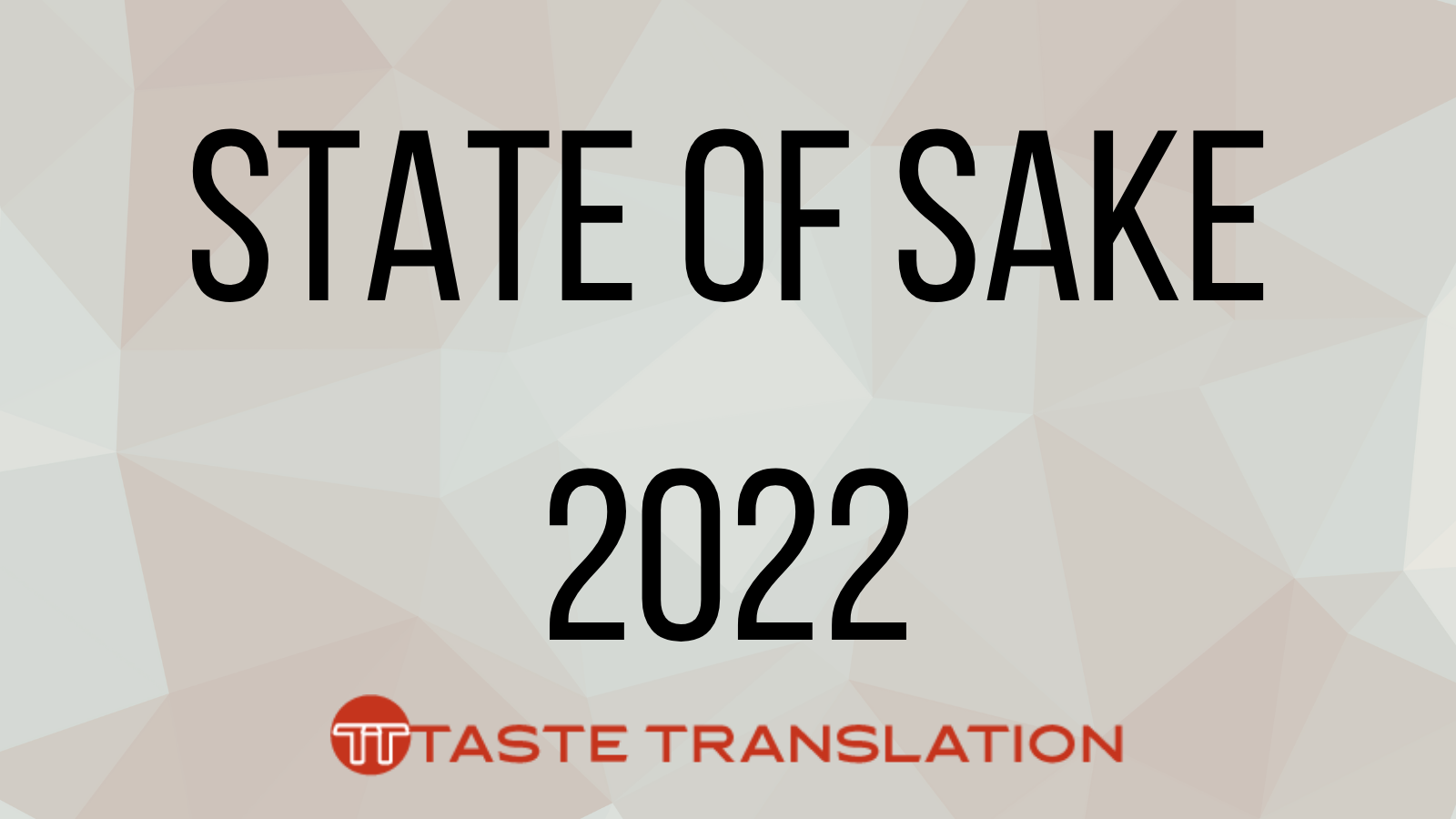
For historical reasons (including using alcohol taxes to fund military action) alcohol production in Japan is overseen by the Japanese National Tax Agency (NTA). As well as collecting taxes, they also provide a host of services and subsidies for companies making sake, shōchū, awamori, liqueurs, wine, beer and other drinks, and collate and publish statistics on production, consumption and export of alcohol produced in Japan. Their latest comprehensive report on the Japanese drinks industry, Sake no Shiori, was issued in March 2022. (162 page PDF, Japanese)
This post covers Part 2 of the 17-page Preface – the post for Part 1 is here, with Part 3 to follow.
Part 2 of the 2022 Sake no Shiori focuses on issues facing the Japanese alcoholic drinks industry. The NTA is committed to supporting the industry by increasing both its market and demand, ensuring stable development, and particularly promoting exports – overseas markets are seen to have the greatest potential. All while ensuring compliance with legal regulations.
The first topic the report looks at is differentiation and added value. It not only repeats the depressing fact that domestic demand is in long-term decline, but also notes that current efforts to stimulate demand inside Japan have not been successful and no recovery or expansion can be expected as things are. The NTA instead highlights the need for those in the drinks business to create new products and services and develop new markets, without being constrained by conventional methods of product development, manufacturing or sales. They also point out that better management and structural reform are needed in the industry. There is also an acknowledgement of the recent increase in start-ups and new entrants from other industries, and movements to increase unit price, which the NTA expects to see more of these in future.
The second topic is growing overseas markets and promoting exports. There is a bit more optimism here, and the NTA notes that although the export value of Japanese drinks is growing they still account for just 0.1% of a global market valued at JPY 100 trillion. So it is critical to develop overseas markets by increasing awareness of Japanese drinks and developing sales channels. In some overseas markets, large companies dominate distribution so exporters have to start or continue working with these dominant companies in order to increase sales. And for Japanese drinks to sell, they not only have to be of high quality but also recognised locally – to the degree that local people will choose them when they see them. Right now, only a few Japanese drinks brands have this level of recognition. And product selection/development and presentation needs to be based on an understanding of the preferences and requirements of local consumers. Some export destinations impose high import taxes or other restrictions, such as a limit on volumes of wine for the USA.
The next topic is techniques and securing human resources. The average age of employees in the drinks industry in Japan is still rising, and there is a lack of interest in working in the industry, leading to a severe shortage of staff. For producers, there is a particular risk of losing the techniques and expertise of tōji [杜氏, master brewers] before they can be passed on.
Another subject of concern is support for small to medium enterprises (SMEs). Most drinks companies are SMEs with deep historical and cultural ties to their local communities. Many are pillars of their area, playing an important role in stimulating local economies and communities. Drinks makers and their products are also important elements for regional revitalisation as they contribute to the local economy and appeal to tourists. So their impact is not limited to the drinks industry, but extends to revitalisation and structural reform in the entire region. Seen the role these companies play in initiating and sustaining regional revitalisation, the NTA recognises that drinks makers need to be effectively supported to adapt to socioeconomic conditions based on their actual needs, and measures must be put in place to ensure techniques and expertise of individual makers and industry groups are passed on.
The last topic raised is legal compliance. The NTA here acknowledges the tension between alcohol being a source of tax revenue for the state, and an intoxicating and addictive substance of social concern, as well as the role of licensing alcohol production and sale in maintaining a balance between the two. Their remit also includes ensuring compliance with laws and regulations designed to provide a fair business environment, prevent underage consumption [legal age in Japan is 20] and tackle alcohol-related health issues.
__________
And that covers part 2 of the Preface of the 2022 Sake no Shiori! I am grateful to the NTA for allowing their content to be reproduced/used with credit and a link to the original material. (The translation is mine, not to be used or reproduced without written permission.)
Links
- Sake no Shiori 2022 (PDF, 162 pages, Japanese, National Tax Agency Japan, Taxation Department, Office of Liquor Taxation and Export Promotion, March 2022)
- Index page where you can download the whole report (linked above) or individual sections (Japanese)
Want Japanese sake news straight to your inbox?
The translations/summaries of Japanese language news articles and other content provided on this site are part of a personal project to increase the amount of information about Japanese sake available in English.
Coverage of an organisation, product or event does not in any way imply approval or endorsement.
All translations/summaries and other content are © 2017-2021 Arline Lyons.